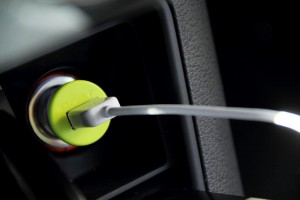Energy Efficiency
Each fractional reduction in your carbon footprint can make difference.
I am a member of a warehouse store where we can buy 50 pounds of rice whenever we want. As exciting as that may be, I don’t mind going because I get to snack on the free food handed out from the tester stands, one of life’s little treats. Now I don’t specifically go to a warehouse store for the free food, it is simply a bonus to a trip I was already taking. That is the point of what we are about to review, how to get a simple bonus from a trip you were already taking.
 Let’s face it, most people will spend some portion of their daily lives in a car of some sort, hopefully one with low or zero emissions but that is beside the point. Have you considered that your car is your own personal electric company that hands out electricity at no additional cost? The old cigarette lighter or 12 volt socket is ready to provide electricity whenever the car running, enough to power all sorts of devices. This electricity is your small bonus that could help fractionally lower your electric bill and reduce your carbon footprint. Your car is far less efficient than your local power company so this tip only applies if the morning or evening commute will happen anyway.
Let’s face it, most people will spend some portion of their daily lives in a car of some sort, hopefully one with low or zero emissions but that is beside the point. Have you considered that your car is your own personal electric company that hands out electricity at no additional cost? The old cigarette lighter or 12 volt socket is ready to provide electricity whenever the car running, enough to power all sorts of devices. This electricity is your small bonus that could help fractionally lower your electric bill and reduce your carbon footprint. Your car is far less efficient than your local power company so this tip only applies if the morning or evening commute will happen anyway.
The average cell phone uses 3.68 watts of power when re-charging its battery and draws 2.24 watts when charged by plugged in, according to the Lawrence Berkley National Laboratory. Making an assumption that charging a cell phone will take 2 hours every day with some usage through the day and continues for an entire year the total usage would be 2.7 kWh. So charging your cell phone during the commute provides a whopping savings of $0.28 per year. While the personal savings will not let you retire any earlier, it comes down to strength in numbers. Consider that if 10,000 people in each state did this yearly that would be a reduction of 135,000 kWh, equal to savings of approximately 175,500 pounds of CO2 per year. Each fractional reduction in your carbon footprint can make difference, especially when you pass the tips onto others.
Photo by IDAPT